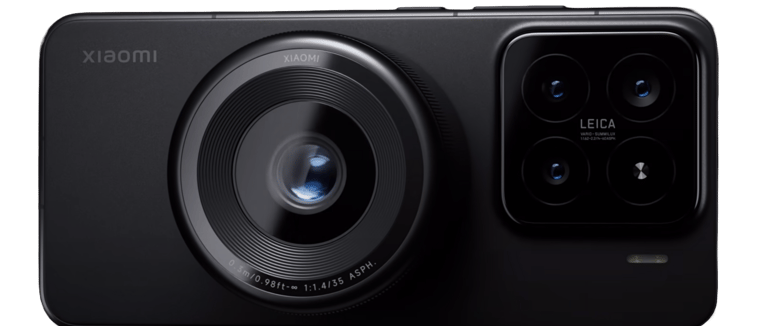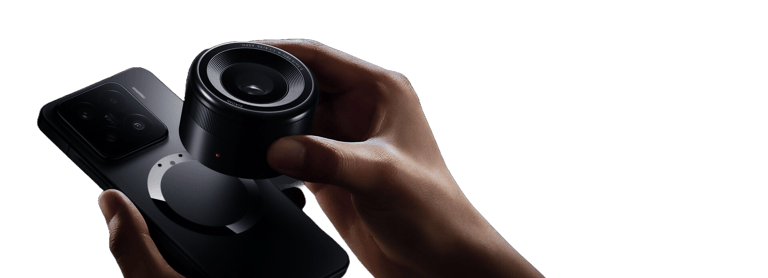
Xiaomi's new smartphone: a modular photographic revolution with a 100MP micro 4/3 sensor


Introduction to the new Xiaomi smartphone
Xiaomi recently launched its latest smartphone, marking a significant advance in the field of mobile technology. This new model is particularly distinguished by its revolutionary photo sensor of 100MP micro 4/3, which places photography at a higher level. The innovative design of the device is not only limited to its aesthetics; It also reflects Xiaomi's commitment to offer unrivaled user experiences. With an elegant and ergonomic design, the smartphone is not only pleasant to look at, but it is also practical to use on a daily basis.
The launch of this smartphone arouses great enthusiasm in the technological industry, both for its advanced characteristics and for the promise it embodies. In a world where photography and video play a central role in communication and personal expression, the ability of this new device to capture images of impressive quality is a major asset. This model allows users to take photos worthy of professionals, which results in sharper and more detailed shots, even in low light conditions.
In addition, Xiaomi smartphone incorporates sophisticated image processing processing features, thus optimizing each shoot. This improves not only the quality of the photos, but also enriches the user's experience in terms of content creation. During the recent years, mobile photography has experienced a dazzling development, and Xiaomi, with its latest smartphone, seems determined to take control of this revolution. Consequently, photography enthusiasts, whether professional or amateur, should find pleasure in exploring the new possibilities offered by this innovative device.
TECNOLOGY OF THE SENSOR 100MP Micro 4/3
The new 100MP 4/3 100MP sensor integrated into the Xiaomi smartphone marks a significant step in the evolution of mobile photography. With its dimensions higher than those of traditional sensors, this sensor allows you to capture impressive details, offering a resolution that approaches that of professional digital cameras. This larger format significantly improves light collection capacity, which is essential for obtaining clear and vibrant images, even in low lighting conditions.
One of the notable characteristics of the micro 4/3 sensor is its ability to reduce digital noise, a common challenge when photographing in the dark. Thanks to an advanced design of larger pixels, each pixel is capable of capturing more light, allowing better definition and better clarity in images taken in dark environments. Compared to smaller sensors, the 100MP sensor also offers improved color management, making the colors more faithful to reality and adding an exceptional depth to the photos.
In addition, this revolutionary sensor directly influences the quality of the recorded videos, allowing a better rendering of textures and higher fluidity. Users of this smartphone can expect videos of exceptional clarity, even during quick or moving events. Amateur photographers and professionals will appreciate the creative possibilities offered by this sensor, in particular thanks to advanced shooting modes and improved post-processing options. In the end, the integration of the 100MP 4/3 100MP sensor into a smartphone represents a turning point in mobile photography, offering unprecedented performance that approaches those of exceptional cameras.
Modular characteristics and user advantages
The new Xiaomi smartphone is not limited to the simple offer of an impressive 100MP photo sensor with a micro 4/3 technology. It also introduces a modular system that allows users to personalize their photographic and video experience according to their preferences and needs. This modularity turns out to be a real asset in the world of smartphones, offering versatility that satisfies both amateurs and photography professionals.
Users can choose from several modules that can easily attach to the smartphone. For example, a wide angle lens module allows you to expand the field of vision, perfect for landscapes or architectural photos. On the other hand, a telephoto lens module makes it possible to reach distant subjects with exceptional clarity. These modules are not only functional; They also incorporate advanced technologies to guarantee optimal performance while maintaining the compactness of the device.
This modular approach radically changes the user experience. Instead of being limited to standard device equipment, users can adapt their smartphone according to shooting conditions. For example, during sporting events, a photographer could opt for a module with a powerful zoom, while a nature lover could select a macro module to capture unpublished details of wildlife.
In short, this flexibility does not only limit photographic capacities, but also enriches the entire user experience by making the device truly adaptable to various scenarios. By allowing everyone to create a unique configuration, Xiaomi positions their new smartphone as an innovative and personalized solution for photography enthusiasts.
Impact on the world of photography and video
Xiaomi's new smartphone, equipped with a 100MP 4/3 100MP sensor, is redefining photography and video standards on smartphone. This technological advance promises to transform not only the way in which amateurs and professionals capture images, but also expectations vis-à-vis the photographic capacities of smartphones. A sensor of this scale allows better management of light, more precise details and improved performance in low light conditions, which particularly attracts photographers in search of superior image quality.
For videographers, the impact is just as significant. This smartphone offers high resolutions and the possibility of filming in 4K, which opens up new creative opportunities while making the videography more accessible. Users can now produce professional quality content without investing in expensive and bulky equipment. This democratization of technology aims to encourage more enthusiasts to explore the cinematographic universe through their mobile devices.
In a commercial context, the presence of this high -end sensor risks intensifying competition between smartphones brands. Other manufacturers may be pushed to innovate so as not to leave. This means that consumers could benefit from new advanced photographic functional models, thus enriching the market. In addition, this development could influence trends in mobile photography, resulting in both changes in the training of photographers and an adaptation of media sharing platforms. Mobile photo technology continues to evolve at a quick pace, and the impact of this smartphone could be deep and durable.




